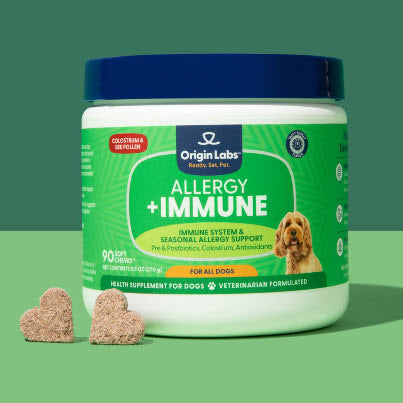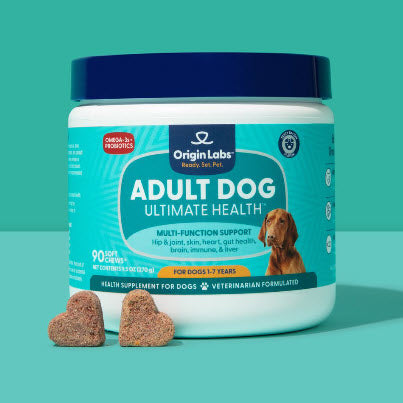Introduction
Feeding bologna to dogs has sparked considerable debate among pet owners and veterinarians. Some argue that occasional consumption is harmless, while others warn about the potential health risks. Understanding these risks and benefits is crucial for making informed decisions about your dog's diet.
Bologna, often laden with sodium, fat, and preservatives, can pose serious health threats to dogs if consumed in large quantities. This article delves into the composition of bologna, highlights its impact on canine health, and explores safer alternatives.
To ensure optimal health for your furry friend, it's essential to consider appropriate Supplements that cater to their specific needs. Whether you have an adult dog or a growing puppy, providing them with the right nutrition is crucial. These supplements are specifically formulated to support their overall well-being as they age or grow respectively.
Ready to uncover the truth behind this controversial snack? Let's dive in!
Understanding Bologna and Its Ingredients
Definition and Composition of Bologna
Bologna is a type of sausage that originated in Bologna, Italy. It is typically made from a finely ground combination of beef, pork, or a blend of both meats. This mixture is then mixed with various spices and seasonings to enhance its flavor, encased, and cooked to create the final product.
Common Additives and Preservatives Found in Bologna
To extend its shelf life and maintain its taste and texture, bologna often contains several additives and preservatives. Some common additives include:
- Sodium nitrate: Helps preserve the meat's color and prevent bacterial growth.
- Sodium phosphate: Enhances water retention to keep the bologna moist.
- Corn syrup: Adds sweetness and aids in binding ingredients together.
While these additives are essential for prolonging the product's shelf life, it's important to note that they may not be suitable for dogs.
High Sodium and Fat Content in Bologna
Bologna is known for its savory taste, but it also comes with a cost – it has high levels of sodium and fat. A typical slice can contain up to 300 milligrams of sodium and around 8 grams of fat. However, these components pose significant health risks for dogs.
Potential Impact on Canine Health
Feeding bologna to dogs can lead to several health concerns:
- High Sodium Levels: Excessive sodium intake can cause salt poisoning in dogs, leading to symptoms like vomiting, diarrhea, seizures, and even death.
- High Fat Content: Consuming fatty foods can result in obesity, pancreatitis, and other digestive issues.
For those looking to provide their dogs with alternatives, consider exploring options like senior dog ultimate health chews. These chews are specially formulated with your dog's age in mind and are designed to support their overall health without the harmful additives found in bologna.
Can Dogs Eat Bologna?
The Impact of Sodium on Dogs' Health
Dogs consuming bologna may face several health risks, primarily due to its high sodium content. Sodium is an essential nutrient, but excessive intake can be detrimental to a dog's health.
Dangers of Excessive Sodium Intake for Dogs
Excessive sodium in a dog's diet can lead to various health problems, including:
- Dehydration: High sodium levels cause the body to lose fluids, leading to dehydration.
- Kidney Strain: The kidneys work harder to expel the excess salt, potentially leading to kidney damage over time.
- Increased Blood Pressure: Elevated sodium levels can result in hypertension, increasing the risk of heart disease.
Symptoms and Signs of Salt Poisoning in Dogs
Salt poisoning is a severe condition that occurs when a dog ingests too much sodium. Watch for these symptoms if your dog has consumed bologna or other salty foods:
- Vomiting and Diarrhea: These are often the first signs of salt poisoning.
- Excessive Thirst and Urination: The dog will drink more water and urinate frequently.
- Lethargy and Weakness: Your pet may appear unusually tired or weak.
- Tremors or Seizures: In extreme cases, salt poisoning can cause neurological symptoms such as tremors or seizures.
If you observe any of these symptoms, it's crucial to seek veterinary care immediately.
Long-term Effects on Canine Health
Long-term consumption of high-sodium foods like bologna can have lasting effects on a dog's health:
- Chronic Kidney Disease: Continuous strain on the kidneys from processing excess sodium can lead to chronic kidney issues.
- Heart Problems: Persistent high blood pressure can contribute to heart disease and other cardiovascular issues.
- Liver Damage: Excessive salt affects not just the kidneys but also the liver, impairing its function over time.
Understanding these risks underscores why feeding bologna to dogs is controversial. It's essential to consider safer alternatives that won't compromise your pet's well-being.
The Role of Fat in Canine Diet
Understanding the role of fat in a dog's diet:
Fat is an essential component of a dog's diet, providing energy and aiding in the absorption of essential vitamins. Dogs require a balanced amount of fat to maintain healthy skin, coat, and overall vitality. However, the type and quantity of fat matter significantly.
Risks associated with high-fat foods for dogs:
Feeding dogs bologna introduces them to a high-fat content, which poses several risks:
- Obesity: Regular consumption of high-fat foods like bologna can lead to obesity. Obesity in dogs can cause joint problems, respiratory issues, and reduce their lifespan.
- Pancreatitis: A severe and painful condition where the pancreas becomes inflamed due to excessive fat intake. Symptoms include vomiting, diarrhea, abdominal pain, and lethargy.
Dogs consuming bologna on a regular basis face potential health hazards. While small quantities may not be immediately toxic, consistent intake contributes to these significant health issues. Always consult with a veterinarian to ensure your dog's diet is balanced and safe.
Safer Alternatives to Bologna for Dogs
Homemade Sausage as an Alternative
Creating homemade sausage for your dog can be a healthier and safer option compared to store-bought bologna. This approach allows you to control the ingredients, ensuring that they are fresh and free from harmful additives. Here's a step-by-step guide on how to make homemade sausage for dogs:
Select Quality Ingredients:
- Choose lean meats like chicken, turkey, or beef.
- Avoid processed meats and opt for fresh cuts.
- Incorporate healthy vegetables such as carrots, spinach, or peas.
Grind the Meat:
- Use a meat grinder to achieve the desired texture.
- Ensure the grinder is clean and sanitized to prevent contamination.
Mix Ingredients:
- Combine ground meat with finely chopped vegetables.
- Add small amounts of dog-safe herbs like parsley or basil for flavor.
Shape the Sausages:
- Form the mixture into small sausage shapes or use natural casings if preferred.
- Ensure the size is appropriate for your dog's breed and chewing ability.
Cook Thoroughly:
- Bake or steam the sausages until fully cooked through.
- Avoid frying, as it adds unnecessary fats.
Storage:
- Store cooked sausages in an airtight container in the fridge.
- Freeze portions if making in bulk.
Controlling Ingredients and Quality
Homemade sausage ensures you have full control over what goes into your dog's diet. By choosing high-quality, nutritious ingredients, you can avoid common additives found in commercial products. Key benefits include:
- No Preservatives or Fillers: Prevents exposure to potentially harmful chemicals.
- Balanced Nutrition: Tailor the recipe to meet your dog's specific dietary needs.
- Freshness Guaranteed: Use fresh ingredients to enhance taste and nutritional value.
Ensuring Safety and Avoiding Harmful Additives
When preparing homemade sausage for dogs, it's crucial to avoid ingredients that could be harmful:
- No Onions or Garlic: These can be toxic to dogs even in small quantities.
- Low Sodium: Excessive salt can lead to health issues such as hypertension.
- Avoid Artificial Flavors and Colors: Stick to natural flavors from meats and veggies.
- Avoid Black Peppers: As dogs cannot consume black peppers, it's important to exclude them from the recipe.
By focusing on these safety measures, you ensure that the homemade sausage is a safe treat for your furry friend. This not only provides a healthier alternative but also keeps them excited about their meals without compromising their health.
Exploring other meat-based alternatives for dogs can further diversify their diet while maintaining nutritional balance.
Exploring Other Meat Options
When looking for meat-based alternatives for dogs, it's important to try out different types of meats to make sure they're getting all the nutrients they need.
Different Types of Meat Suitable for Dogs
- Chicken: A lean protein source that is easily digestible. Ideal for dogs with sensitive stomachs.
- Turkey: Similar to chicken but with a slightly different nutrient profile. Good for maintaining muscle mass.
- Beef: Rich in iron and B vitamins. A hearty option that supports overall health and energy levels.
- Lamb: Often recommended for dogs with allergies or food sensitivities due to its unique protein structure.
- Fish: High in omega-3 fatty acids, promoting healthy skin and coat.
Nutritional Value of Alternative Meats Like Chicken or Turkey
Chicken and turkey are excellent choices due to their high protein content and lower fat levels. They provide essential amino acids, vitamins (B6, B12), and minerals (phosphorus, selenium) necessary for a dog's growth and maintenance. These meats are also relatively low in calories, aiding in weight management.
"Introducing new proteins like chicken or turkey can diversify your dog's diet while providing vital nutrients."
Considerations When Introducing New Proteins to a Dog's Diet
- Gradual Introduction: Start by mixing small amounts of the new meat with your dog's regular food to prevent digestive issues.
- Monitor Allergies: Watch for signs of food allergies such as itching, gastrointestinal distress, or unusual behavior.
- Balanced Diet: Ensure the new meat is part of a balanced diet that includes other essential nutrients like vegetables and grains if appropriate.
By exploring various meat options, you can cater to your dog's specific dietary needs while enhancing their overall health and well-being.
Consulting a Veterinarian for Dietary Safety
Importance of Consulting a Veterinarian Regarding Dietary Choices for Dogs
Ensuring your dog has a balanced and safe diet is crucial. While it might be tempting to share human snacks like bologna with your furry friend, consulting a veterinarian is essential. Vets have specialized knowledge about canine nutrition and can provide tailored advice based on your dog's specific health needs, including congestive heart failure, which requires careful dietary management.
Professional Advice on Feeding Bologna to Dogs
When asking your vet about feeding bologna to dogs, it's important to consider their professional perspective:
- Bologna's Nutritional Content: Vets can explain how the high sodium and fat content in bologna might affect your dog's health.
- Potential Risks: They will highlight potential risks such as obesity, pancreatitis, and salt poisoning.
- Safe Quantities: Your vet can advise if occasional bologna treats are acceptable and in what amounts.
Understanding Individual Dog's Specific Needs and Potential Allergies
Each dog is unique, with specific dietary requirements and potential allergies. Vets can:
- Assess Health Conditions: Determine if your dog has any underlying conditions that could be exacerbated by certain foods, such as congestive heart failure.
- Identify Allergies: Conduct tests to identify any food allergies or intolerances.
- Personalized Diet Plans: Provide guidance on creating a balanced diet plan tailored to your dog's age, breed, weight, and health status.
Key Takeaways from Veterinary Consultation
- Holistic Approach: Vets look at the overall well-being of your pet, considering factors such as activity level, existing medical conditions, and nutritional needs, especially in the case of congestive heart failure.
- Preventive Care: Regular check-ups allow for early detection of potential issues related to diet.
- Educational Resources: Vets often provide resources or recommend credible sources for further reading on canine nutrition, like this comprehensive guide on pet nutrition published by Royal Canin.
Example Questions to Ask Your Vet
To make the most out of your consultation, consider asking:
- Can my dog safely eat bologna occasionally?
- What are the signs of salt poisoning or pancreatitis I should watch for?
- Are there safer alternatives you recommend for my dog's treats?
Veterinary guidance ensures you're making informed decisions about your dog's diet. Always prioritize professional advice to maintain the health and happiness of your canine companion. Additionally, this study on the impact of diet on cardiovascular health in dogs can provide further insights into the importance of dietary safety.
Conclusion
Understanding whether dogs can have bologna involves weighing the potential risks against any perceived benefits. Key points discussed include:
Bologna Composition
- High in sodium and fat.
- Contains additives and preservatives that may harm canine health.
Health Risks
- Excessive sodium can lead to salt poisoning, with symptoms like vomiting, diarrhea, and even seizures.
- High-fat content increases the risk of obesity and pancreatitis.
Safer Alternatives
- Homemade sausage allows for control over ingredients and quality.
- Other meats like chicken or turkey provide nutritious options without harmful additives.
Consulting a veterinarian ensures dietary choices meet your dog's specific needs and avoid potential allergens. Prioritizing your dog's health means opting for safer, more nutritious alternatives, whether it includes bologna or not.
FAQs (Frequently Asked Questions)
Can dogs eat bologna?
Explanation of the controversy around feeding bologna to dogs and the potential risks and benefits.
What are the ingredients in bologna?
Definition and composition of bologna, including common additives, preservatives, high sodium, and fat content.
What are the risks of feeding bologna to dogs?
Explanation of the dangers of excessive sodium intake for dogs, symptoms and signs of salt poisoning, and long-term effects on canine health.
Why is a high-fat diet risky for dogs?
Understanding the role of fat in a dog's diet, the potential risks associated with regular consumption of bologna, and the impact of high-fat food on a dog's health.
What are some safer alternatives to bologna for dogs?
Introduction to homemade sausage as an alternative, including the process of making it, controlling ingredients and quality, and ensuring safety.
Why is it important to consult a veterinarian regarding dietary choices for dogs?
Importance of professional advice on feeding bologna to dogs, understanding individual dog's specific needs, and potential allergies.
Can dogs have bologna?
Summary of key points discussed in the article and final thoughts on ensuring a safe and healthy diet for your dog, with or without bologna.








